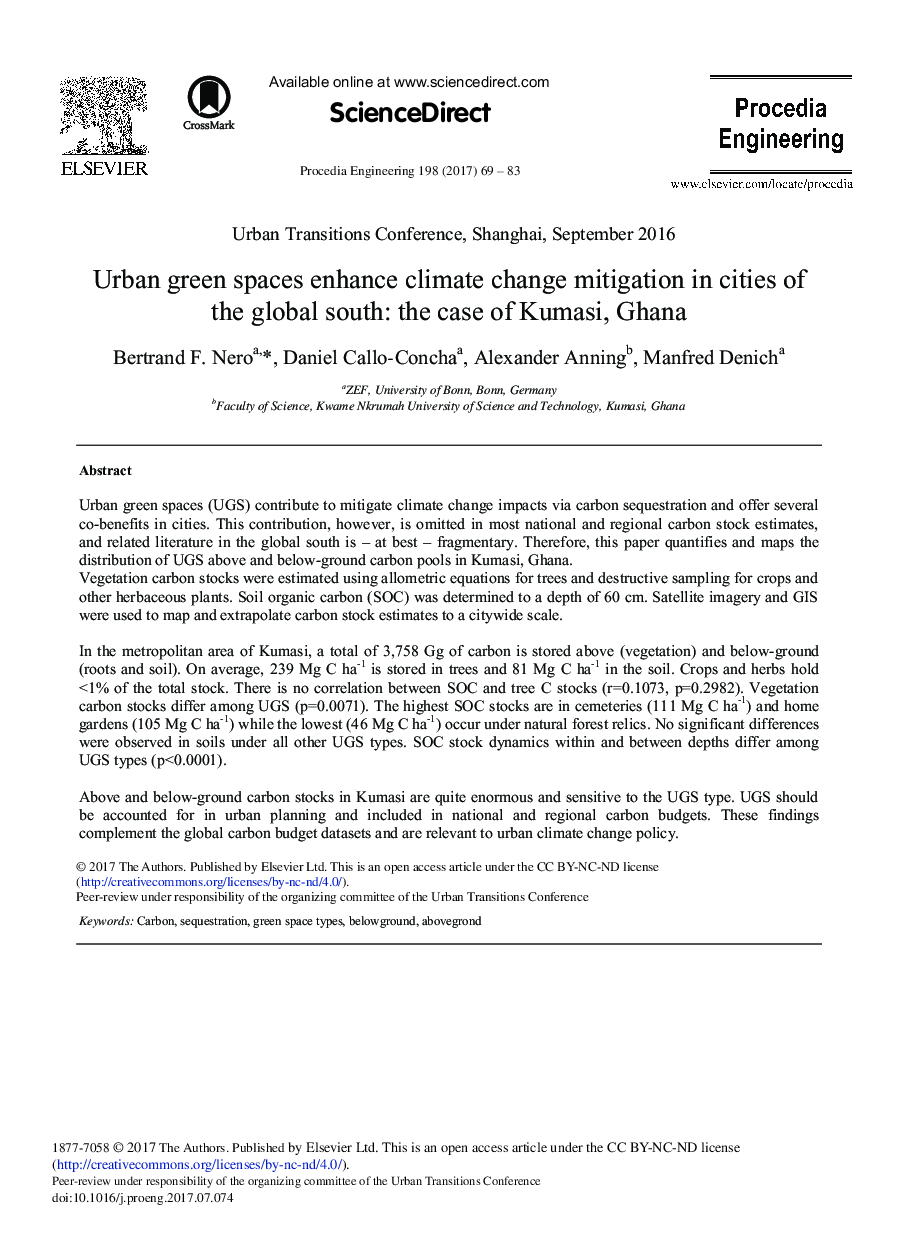| Article ID | Journal | Published Year | Pages | File Type |
|---|---|---|---|---|
| 5027377 | Procedia Engineering | 2017 | 15 Pages |
Urban green spaces (UGS) contribute to mitigate climate change impacts via carbon sequestration and offer several co-benefits in cities. This contribution, however, is omitted in most national and regional carbon stock estimates, and related literature in the global south is - at best - fragmentary. Therefore, this paper quantifies and maps the distribution of UGS above and below-ground carbon pools in Kumasi, Ghana.Vegetation carbon stocks were estimated using allometric equations for trees and destructive sampling for crops and other herbaceous plants. Soil organic carbon (SOC) was determined to a depth of 60Â cm. Satellite imagery and GIS were used to map and extrapolate carbon stock estimates to a citywide scale.In the metropolitan area of Kumasi, a total of 3,758 Gg of carbon is stored above (vegetation) and below-ground (roots and soil). On average, 239 Mg C ha-1 is stored in trees and 81 Mg C ha-1 in the soil. Crops and herbs hold <1% of the total stock. There is no correlation between SOC and tree C stocks (r=0.1073, p=0.2982). Vegetation carbon stocks differ among UGS (p=0.0071). The highest SOC stocks are in cemeteries (111 Mg C ha-1) and home gardens (105 Mg C ha-1) while the lowest (46 Mg C ha-1) occur under natural forest relics. No significant differences were observed in soils under all other UGS types. SOC stock dynamics within and between depths differ among UGS types (p<0.0001).Above and below-ground carbon stocks in Kumasi are quite enormous and sensitive to the UGS type. UGS should be accounted for in urban planning and included in national and regional carbon budgets. These findings complement the global carbon budget datasets and are relevant to urban climate change policy.
